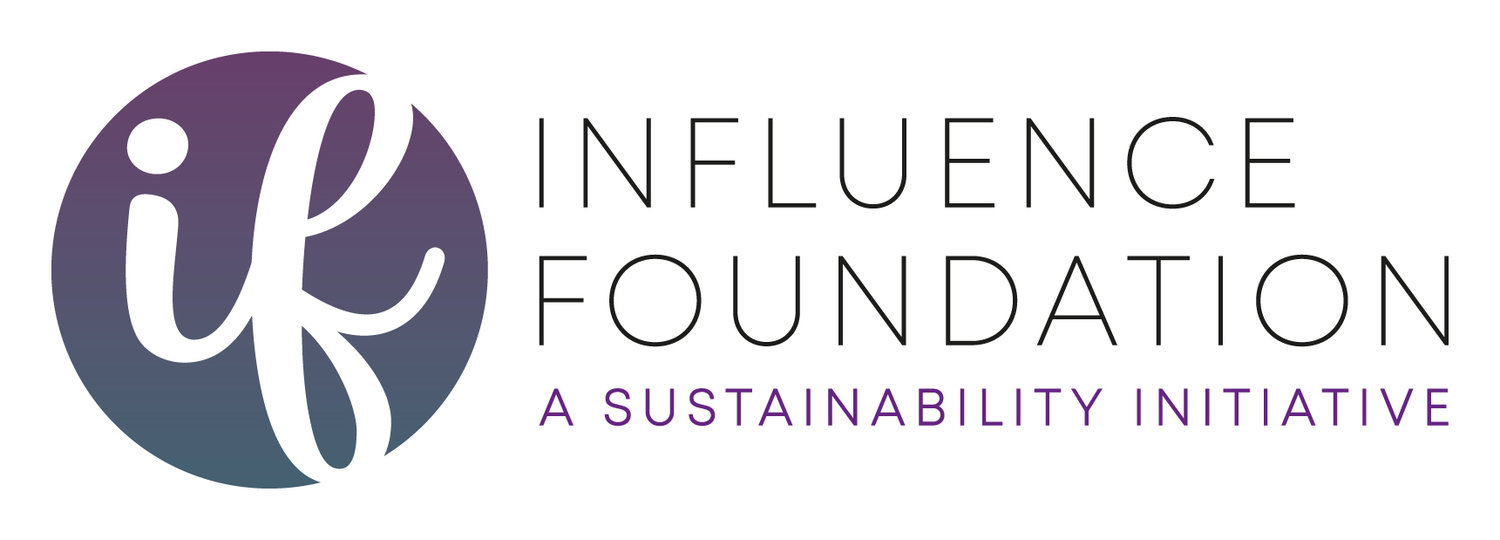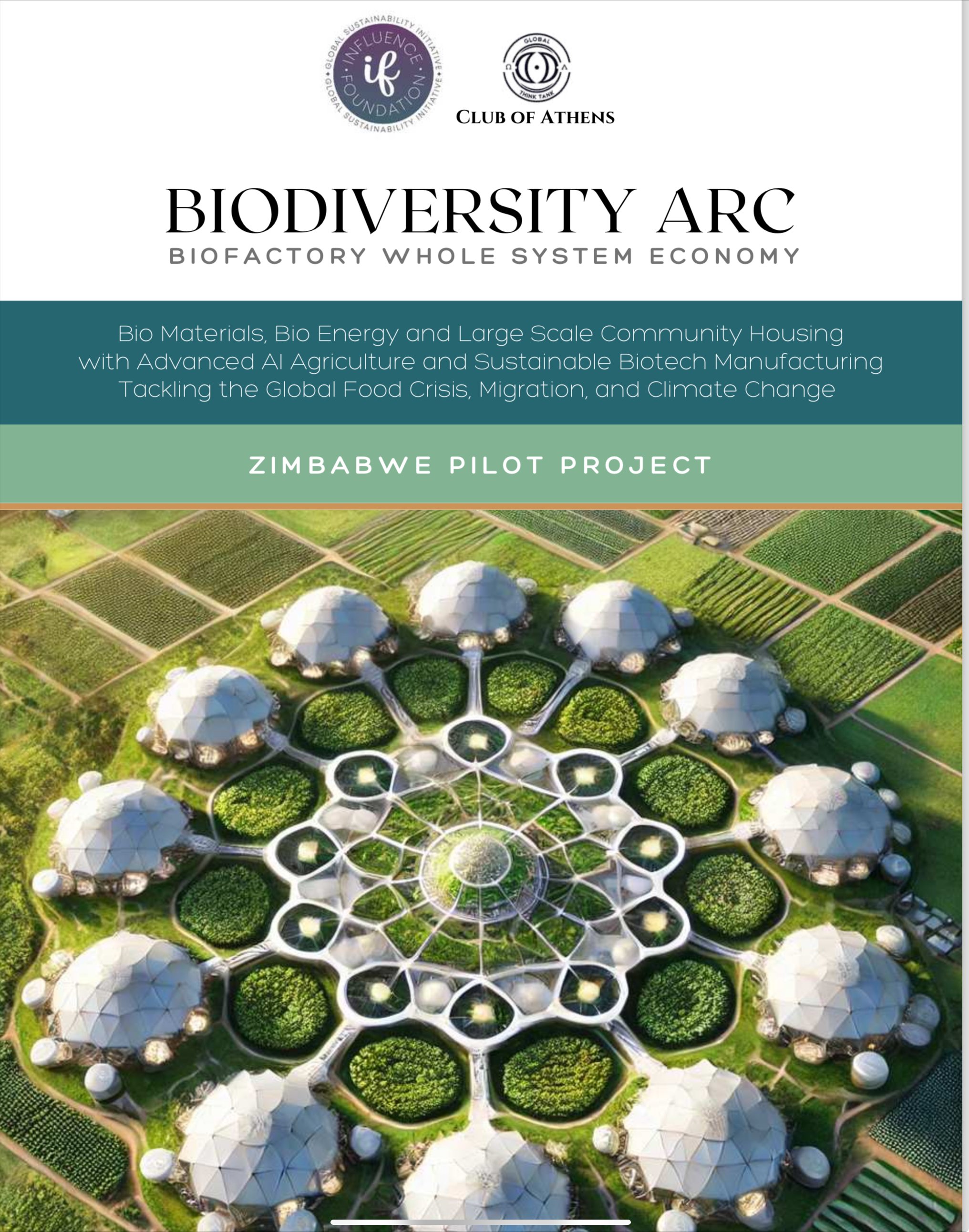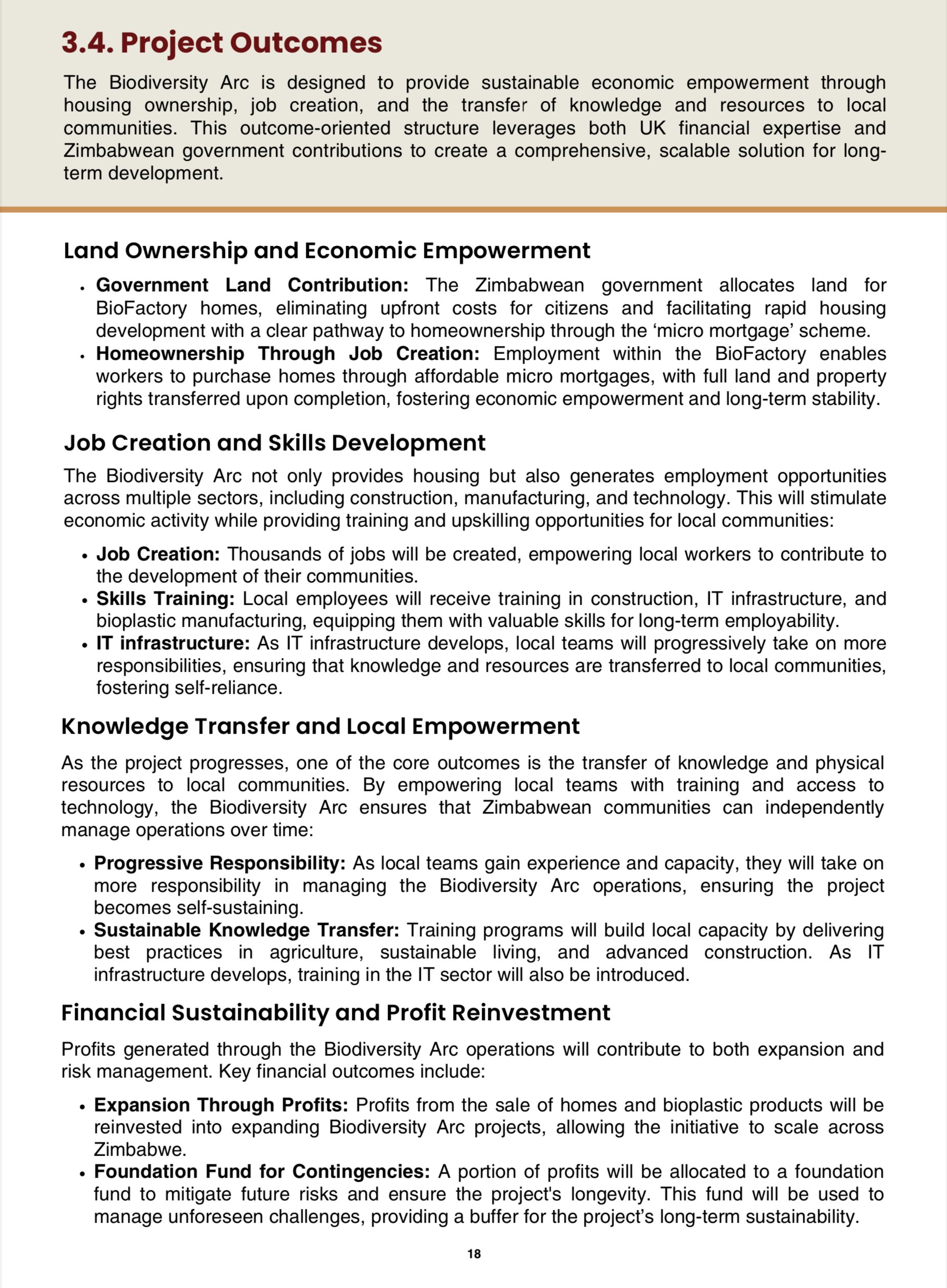THE DECISIVE DECADE FOR
OUR PLANET
THE BIODIVERSITY ARC: TRANSFORMING AFRICA FROM CRISIS TO CONTINENTAL PROSPERITY
When 18.65 Million Farmers Rise, Humanity Rises
The Revolutionary Mathematics of Hope
In the heart of Africa lies an astonishing paradox: 80.14 million hectares of fertile land sit idle while the continent imports $75 billion in food annually. Meanwhile, 18.65 million farmers—the very people who feed the continent—operate at losses, trapped in a system that extracts their value while leaving them impoverished. The Biodiversity Arc isn't just another development project; it's a mathematical revolution that transforms this paradox into prosperity.
The numbers tell a story of transformation so profound it defies conventional development thinking. A farmer currently losing $717 annually becomes profitable from Day One through the Arc system, progressing to $1,500 in Year 1, $15,000-20,000 by Year 4, and ultimately $38,091 annually when the full ecosystem matures. This isn't aid—it's commerce. This isn't charity—it's justice. This isn't theory—it's a proven model ready for continental deployment.
What makes this possible? A revolutionary Farmer-First DAO (Decentralized Autonomous Organization) model that gives farmers 40% equity ownership in the entire value chain. Instead of receiving payment once at commodity prices, farmers earn ongoing revenue through five transformative tiers: base price plus 5% premium at farm gate, 0.5% of processing value, 1.0% of branding value, 0.5% of retail margin, and 1.0% bonus on final consumer purchase. When Maria Mwangi in Kenya sells cassava, she doesn't just get paid once—she earns continuously as that cassava becomes flour, then bread, then reaches a consumer in Nairobi or Berlin.
The Coalition of Titans: Global Meets Local at Every Level
This initiative brings together leaders who have already transformed industries. Charlie Stuart Gay, who has worked in humanitarian efforts for 40+ years and twenty years ago had Nelson Mandela and his wife as Patrons, stewards the Arc. Access Agriculture has spent 13 years building training infrastructure in 80+ languages, with teams like Elphas Masanga in Kenya, Edward Sibeene in Zambia, and Brian Anafi in Malawi leading local implementation. Geoff Whaling, Chairman of the National Hemp Association, has influenced hemp policy in 60+ countries and brings $150M in raised capital plus the rePlant Hemp $500M venture fund to transform agricultural systems. SANA Foods, after reaching 4,000 stores across North America, strategically paused retail expansion to build this farmer-first model. Food4Africa has already delivered 70 million meals through regional leaders like Josephine Ojiambo in Kenya and Denial Chimuti in Zimbabwe.
The global-local structure ensures authentic implementation. International expertise meets regional coordination through organizations like the Club of Athens, Club of Rome, and Club of Brussels. National leadership engages through government partnerships: Professor Obert Jiri in Zimbabwe's Ministry of Agriculture, Rwanda Development Board's 7,000 cooperatives, Tanzania's SAGCOT corridor team. Local execution happens through established networks: Kenya's 10 Young Entrepreneur teams deploying videos in 8 languages, Malawi's 8 solar projector operators transforming communities, Zambia's multi-language coordinators reaching remote farmers.
The Five Industry Sectors: Complete Economic Transformation
The Arc revolutionizes five interconnected industry sectors, each reinforcing the others:
1. Food Systems Revolution: From subsistence to surplus through multi-crop models. Cassava yields jump from 12 to 28.8 tonnes/hectare. Hemp produces both fiber ($3,000/tonne) and seed ($2,000/tonne). Integrated crop-livestock systems where chickens provide pest control and eggs, goats offer weed management and milk, creating daily income streams alongside seasonal harvests. Food4Africa's infrastructure delivers nutrition at $0.20/meal while SANA's guaranteed offtake eliminates market risk.
2. Housing & Construction Transformation: 10 million affordable homes from agricultural materials. Hemp and cassava become building blocks through 50+ BioFactories. Responsive Deployment's $54.3M manufacturing capability, proven across FEMA and DoD contracts, deploys in-country modular facilities. Modus brings Net Zero expertise from US markets. Build Academy's $10,000 disaster-resilient homes, validated by World Bank challenges, scale across rural communities.
3. Bio-Energy & Plastics Industry: Every crop residue gains value. Cassava starch becomes biodegradable packaging at $120-200/tonne. Hemp hurds fuel biomass energy systems. Agricultural waste transforms into biochar for soil enhancement. The Hemp Plastic Company and Biome Bioplastics, with 20+ years experience, guide farmers into premium sustainable materials markets.
4. Textile & Clothing Revolution: Sustainable fashion's answer to cotton and synthetics. Hemp fiber supplies premium markets at $300-500/tonne. Unyte Hemp leads UK industrial integration. Traditional African textiles gain global market access. Quality certification and blockchain traceability ensure premium pricing flows back to farmers.
5. Carbon Sequestration Economy: Regenerative practices become currency. Farmers sequester 50-100M tons CO2 annually, earning $15-50/ton. Conservation agriculture improves soil organic matter 15-20% over 5 years. Daniel Erasmus's ClimateGPT, processing 250M URLs daily, validates and monetizes carbon credits. Every improved hectare generates income while healing Earth.
The Seven Revenue Streams: From Single Crop to Ecosystem
Beyond the five industry sectors, farmers access seven distinct revenue streams that compound prosperity:
Agricultural products form the foundation. BioFactory processing adds value at source. Bio-energy from residues creates power and income. Bioplastics from cassava and hemp replace petroleum products. Construction materials from agricultural waste build communities. Textiles supply global sustainable fashion. Carbon credits reward regenerative practices. Each stream reinforces others—construction waste feeds bio-energy, bio-energy ash enhances soil, improved soil increases yields, higher yields expand all revenue streams.
Country Implementation: Precision at Every Level
Regional Hubs coordinate cross-border synergies. East Africa (Kenya-Rwanda-Tanzania) leverages M-Pesa's 30 million users and established digital infrastructure. Southern Africa (Zimbabwe-Zambia-Malawi) transforms tobacco systems into hemp leadership through existing curing barns and export networks.
National Champions drive country-specific strategies. Kenya's ICT ministry integrates digital agriculture with KALRO research stations. Rwanda's Development Board mobilizes 7,000 cooperatives with presidential backing. Tanzania's 45.7M hectares coordinate through SAGCOT corridors. Zimbabwe's First Lady Dr. Auxillia Mnangagwa's Angel of Hope Foundation ensures grassroots penetration. Zambia's National Trust Board manages frontier expansion. Malawi's FISP infrastructure, proven in taking the nation from famine to food exporter, provides the implementation backbone.
Local Execution happens through established networks. Access Agriculture's Young Entrepreneurs—from Grace Harrison championing women farmers in Malawi to Maureen Maina coordinating Kikuyu training in Kenya—ensure knowledge reaches every farm. BioFactory managers, drawn from local communities, oversee nine operational divisions while maintaining cultural relevance. Women's cooperatives, receiving preferential 3% micro-mortgages, drive household transformation.
Implementation Phases: Building Momentum Through Success
Phase 1 (Years 1-2): Foundation - $125M per country establishes core infrastructure. 75,000 farmers per country move from loss to profit. Five BioFactories per nation begin operations. Access Agriculture deploys 10 teams with solar projectors. Immediate results: farmers earning $1,200-1,500 net profit versus current losses. The 5% premium plus cost reductions deliver instant impact.
Phase 2 (Years 3-4): Scaling - $200M per country expands reach. 200,000 farmers achieve $15,000-20,000 annual incomes. BioFactory networks grow to 15 per country. Housing production reaches 5,000 units annually. Multi-crop transformation takes hold: hemp-cassava-sorghum systems replace monocultures.
Phase 3 (Years 5-6): Integration - Regional hubs emerge. 400,000 farmers per country reach full ecosystem participation. Export corridors establish Africa as global sustainable materials leader. The seven revenue streams compound: farmers earning from food, construction, energy, plastics, textiles, carbon, and premiums.
Phase 4 (Year 7): Self-Sustaining - External investment ends. Each pilot country generates $245M annual surplus. Program funds expansion to new countries entirely from profits. Housing Cycle 34 achieved: mortgage income equals construction costs.
Phase 5 (Years 8-10): Continental Leadership - 18.65 million farmers transformed. $710.6B direct farmer income achieved. 500 million additional people fed. Africa leads global regenerative agriculture, sustainable materials, and climate solutions.
Women at the Center: The Multiplication Effect
Women constitute 60-80% of Africa's agricultural workforce yet own only 15-20% of land. The Arc mandates transformation through measurable targets and systemic change. Mandatory joint titling ensures 50% of Arc land includes women's names by Year 3. Women-only cooperatives receive preferential financing. Direct payment systems guarantee women control their earnings.
The impact cascades through communities. Women reinvest 90% of earnings into household welfare versus 35% for men. When women control livestock income—80% of poultry, 70% of small ruminants—children's nutrition improves immediately. School enrollment reaches 95%. Healthcare spending triples. Domestic violence drops 40%. Each empowered woman transforms not just her farm but her family, her community, her nation.
Regional variations require tailored approaches. Malawi's matrilineal traditions, where women already own 32% of land, provide models for neighboring countries. Rwanda's post-genocide land reforms, achieving 26% women's ownership, demonstrate rapid change is possible. Kenya's digital payment systems ensure women receive funds directly, bypassing traditional gatekeepers.
Technology Deployment: Making Complex Simple
The Farmer-First DAO platform, operational at www.influencefoundation.co/farmer-firstv4, handles complexity through elegant simplicity. Smart contracts automate payments across five tiers. NFT identity tokens provide unique, unforgeable farmer identification. QR codes on products connect consumers directly to farmer stories. Blockchain ensures transparency while farmers simply receive payments via familiar mobile money.
Access Agriculture's proven model scales through multiplication. Young Entrepreneurs operate as businesses, not charities. Solar-powered smart projectors reach off-grid communities. Videos in 80+ languages ensure no farmer is excluded. The cost efficiency astounds: €850 per video translation, €60,000 for 10 teams covering entire countries. Thirteen years of refinement created a system where knowledge spreads like beneficial wildfire.
BioFactories become community transformation centers. Nine operational divisions—farm management, refinery, fiber production, manufacturing, textiles, construction, utilities, storage, data—create employment while processing farmer outputs. Local management ensures cultural fit while maintaining global standards. Each facility anchors a rural economic ecosystem, preventing urban migration while creating prosperity.
Financial Architecture: From Aid to Ownership
The investment structure reflects revolutionary thinking. Maximum $1 billion external investment transforms a continent—less than one day's global military spending. But more importantly, farmers become 40% equity owners in the entire value chain. Communities hold 20%. Governments maintain 20% national interest. Private partners receive 15%. Innovation funds get 5%. This isn't trickle-down economics—it's bubble-up prosperity.
Banking partners provide the circulation system. Standard Bank's pan-African presence, Equity Bank's 5 million farmer accounts, Rabobank's $1B facility, and innovative fintech solutions create unprecedented financial inclusion. Farmers access 8% interest rates versus 30%+ traditionally charged. Micro-mortgages at 3% for women's cooperatives accelerate asset building. Every transaction builds credit history, creating future opportunity.
The program becomes self-sustaining by Year 6. Housing Cycle 34—when mortgage income equals construction costs—eliminates need for external funding. Each successful country generates surpluses funding expansion elsewhere. The model doesn't just sustain itself; it multiplies itself.
Environmental Restoration: Prosperity Through Regeneration
Conservation agriculture delivers compound benefits. Costs drop 30-50% as mechanical tillage decreases. Water infiltration improves 25-40%. Soil organic matter increases 15-20% over five years. Chemical fertilizer needs fall 30-50%. Yields increase 15-45% after 3-5 years of implementation.
Biological synergies multiply impact. Chickens control 70% of crop pests naturally. Goats manage weeds while providing fertilizer. Crop rotation with legumes fixes nitrogen, reducing fertilizer needs 40%. Mulching increases yields 20-30% in drought years. Integrated systems sequester 15% more carbon than monocultures.
The climate impact reverberates globally. 500 million tons CO2 sequestered over the program period. 50 million hectares restored through sustainable practices. 30% biodiversity increase on farmlands. 40% water conservation through efficiency gains. 10 million hectares of forest saved from conversion. Africa becomes the world's carbon sink while feeding humanity.
The Unstoppable Momentum of Convergence
By 2031, transformation reaches escape velocity. 100 million people lifted from extreme poverty—not through aid but through ownership. 380 million climate refugees prevented—not through walls but through opportunity. 10 million youth employed—not in cities but in transformed rural economies. Food security achieved for 3 billion people—not through imports but through African soil.
The economic multipliers compound. $710.6B direct farmer income generates $1.77 trillion total economic impact. Export earnings triple from $20B to $60B. GDP contribution reaches $280B annually. National food security eliminates $75B in imports. The ROI isn't 10x or 100x—it's the difference between continental collapse and prosperity.
This convergence of indigenous wisdom and global technology, of profit and purpose, of individual success and collective transformation, creates something unprecedented. Every stakeholder wins because the system aligns all interests. Farmers prosper through ownership. Governments achieve stability. Corporations secure sustainable supply chains. Investors earn returns with impact. Consumers get superior products with authentic stories. Earth gets healing instead of extraction.
The Revolutionary Truth: Simple Solutions to Complex Crises
The Biodiversity Arc proves that feeding humanity and healing Earth aren't opposing forces—they're the same action expressed differently. That prosperity and sustainability aren't in tension—they're in harmony when systems align properly. That the future isn't about aid flowing from North to South—it's about equity, ownership, and justice flowing in all directions.
This is Africa's gift to the world: demonstrating that the most complex global challenges—poverty, hunger, climate change, migration—have simple solutions when we change the system rather than treating symptoms. When farmers own their value chains, poverty ends. When soil health determines wealth, climate change reverses. When rural areas prosper, migration ceases. When Africa rises, humanity rises.
The revolution doesn't need permission. It needs partners. The farmers are ready—18.65 million of them. The land is ready—80.14 million hectares waiting. The technology is ready—from blockchain to bioplastics. The coalition is assembled—titans of industry united with grassroots leaders. The mathematics are irrefutable. The model is proven. The moment is now.
"It might not be easy, yet what if it can be simple?"
Join the revolution. From soil to soul. From farmer to future. From Africa to everywhere.
Contact: cg@influencefoundation.co | +1 310 426 4060
SDG CONSCIOUSNESS EVOLUTION
From Noble Intentions to Tribal Convergence
The Complete 13 Cs Framework for transforming Sustainable Development Goals from institutional mandates to tribal awakening for 2030 success
THE MATHEMATICAL REALITY
After a decade of unprecedented global commitment, only 16% of Sustainable Development Goals are on track for 2030. This isn't implementation failure—it's consciousness evolution following the same pattern as every transformational initiative in human history.
THE CHOICE POINT
The SDGs have reached their inevitable choice point between institutional management and tribal transformation. Understanding this pattern is the key to achieving 2030 success.
THE 13 Cs FRAMEWORK
Every transformational initiative follows the same consciousness evolution pattern. The SDGs are no exception.
THE DESCENT
Where 84% of targets fail and institutions compromise their mission. Creation & Childhood through Confusion, Compromise, Conflict to Crisis.
THE CHOICE POINT
The hinge between bureaucratic management and conscious transformation. Two paths: institutional reform or tribal awakening.
CONSCIOUS IMPLEMENTATION
Tribal-driven action through Confession, Compassion, Clarity, and Consciousness. Community empowerment replaces institutional dependency.
PLANETARY SERVICE
Cooperation and Circulation creating abundance through regenerative approaches. SDGs as force for species evolution.
THE GREAT CONVERGENCE
The 2025-2027 window represents humanity's greatest opportunity for conscious transformation. All wisdom traditions, modern analysis, and planetary crises point to this moment when tribal consciousness can succeed where institutional approaches have failed.
Executive Summary - Biodiversity Arc
This is where your executive summary content will go. Click the other navigation buttons to see how the system works.
Complete 13 Cs Framework
This is where your complete framework content will go.
Biodiversity Arc Details
This is where your biodiversity arc content will go.
Link to demo our Farmer First AI App.
We are in the most decisive decade for the planet.
As our planet warms, government and business leaders are taking strides to cut their emissions and reduce their carbon footprint, pledging to hit “Net Zero” by 2050. But with the focus directed solely on climate, we are missing a second, crucial foundation. Without it, our world – and humanity – cannot survive.
To guarantee a resilient future and sustain humanity, we require an abundance to the important pillars guaranteeing basic rights for all: shelter, food, water, energy, and clothing. It is vital we accomplish this now.
Biodiversity is the most important pillar of planetary health, yet few people have heard of it, and even fewer truly understand. It is the metric upon which all other natural systems and services hang, including climate change. We can no longer afford to think of saving nature as simply a moral obligation. Instead, we must recognise that this metric is the secret to a thriving, healthy, stable Earth - so the more biodiversity there is, the better life could be for the planet and the future of humanity.
By building biodiversity into our systems, we can do something remarkable: we can restore the power of nature, improve our lives and stabilise our planet.
To do this, we need to:
1) raise awareness of the importance of biodiversity;
2) create a groundswell of momentum to protect and restore it and
3) produce the consumption products needs of humanity from it in a regenerative biodiverse sustainable way.
At Influence Foundation “If” together with our collaborating finance, management, technical, education and broadcast partners as well as all the remarkable people and teams assembling in common purpose and common rhythm to carry forward these strategies under a banner “BioDiversity Arc”, we are driven by a simple engine “What If we can” …. and if we don’t we will have surely failed and we will all look back and say “There was nothing more expensive than ignorance”.






